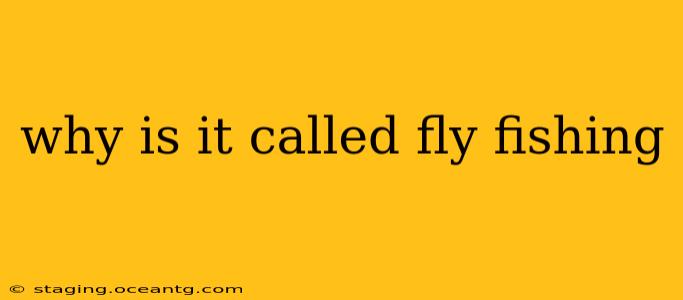Fly fishing, a sport steeped in history and tradition, derives its name from the artificial lures used: flies. These aren't the buzzing insects that plague summer picnics, but meticulously crafted imitations designed to mimic the aquatic insects that trout and other fish feed upon. The term "fly" in this context refers specifically to these artificial insects, not the airborne variety.
The art of fly fishing lies in presenting these artificial flies to fish in a way that mimics the natural drift of insects on the water's surface or beneath it. This delicate presentation requires skill and precision, making the sport both challenging and rewarding. But why “flies”? Why not something else, like "artificial insect fishing"? Let's delve deeper.
What Makes a Fly a "Fly"?
The name isn't arbitrary. The earliest flies were indeed simple representations of insects, often fashioned from feathers, hair, and other natural materials. These materials, when tied together with thread and weighted appropriately, would float or drift on the water's surface in a manner similar to their natural counterparts. The angler's goal was to use this "fly" to entice a hungry fish into striking.
Over time, fly tying evolved, incorporating increasingly sophisticated materials and techniques, but the core principle remained: to create an artificial insect—a "fly"—that would fool a fish into believing it was a real meal. This mimicking of natural insect behavior is central to the sport’s name.
Why Not Other Names?
You might wonder why the sport isn't called something more descriptive, such as "artificial insect fishing" or "feather lure fishing". While these terms are accurate, they lack the elegance and evocative quality of "fly fishing". The name itself conjures images of delicate casting, precise presentation, and the subtle dance between angler and fish. The simplicity and inherent poetry of “fly fishing” encapsulates the essence of the sport far more effectively than more literal alternatives.
How the Flies Work: Mimicking Nature's Deceptions
What are the different types of flies used in fly fishing?
Fly fishing employs a wide array of flies, each designed to imitate specific insects at various life stages (nymphs, emergers, adults). Dry flies float on the surface, while wet flies sink beneath it. Streamers imitate small fish or other aquatic creatures. The specific type of fly used depends heavily on the species of fish being targeted, the time of year, and the insect life prevalent in the water.
How do you choose the right fly?
Selecting the right fly requires knowledge of the local aquatic insect life and the feeding habits of the targeted fish. Experienced anglers often observe the water for signs of insect activity and choose their flies accordingly. Matching the hatch—choosing a fly that closely resembles the insects present on the water—is a key element of successful fly fishing.
Are all fly fishing flies tied by hand?
While many anglers enjoy the craft of hand-tying their own flies, commercially produced flies are also widely available, catering to a broad range of needs and skill levels. Many commercial flies are exceptionally realistic and effective.
The Enduring Appeal of the Name: Tradition and Imagery
In conclusion, "fly fishing" is called such because of the artificial "flies" used to catch fish. The name beautifully captures the essence of the sport – a delicate interplay between angler, equipment, and the natural world – and it has endured because of its evocative imagery and inherent simplicity. It's a name as captivating as the sport itself.
